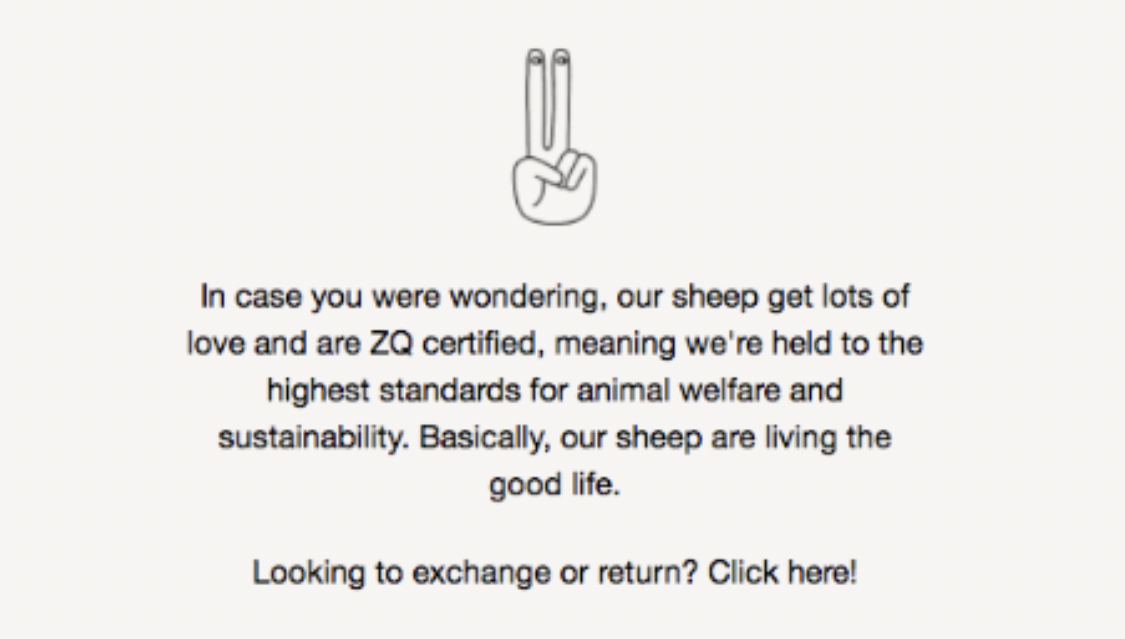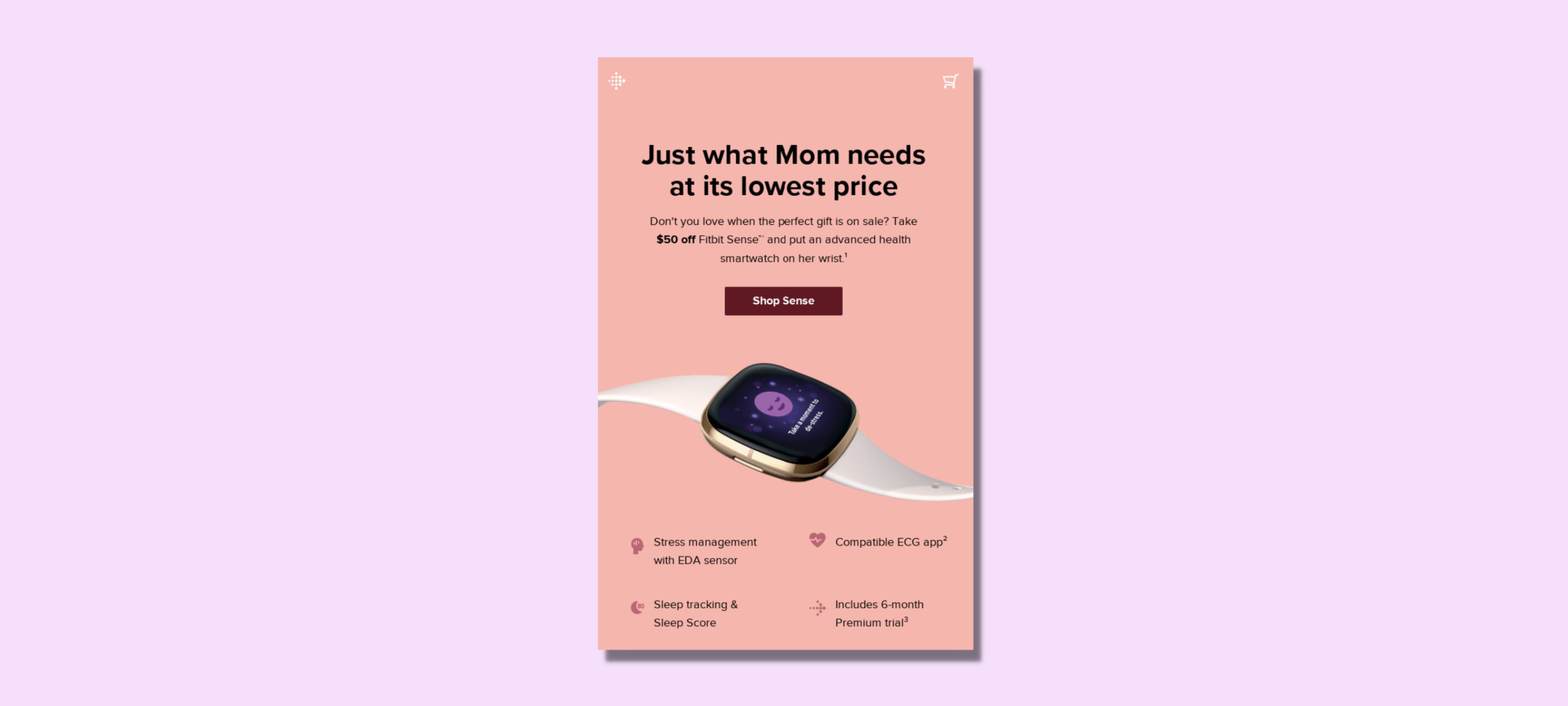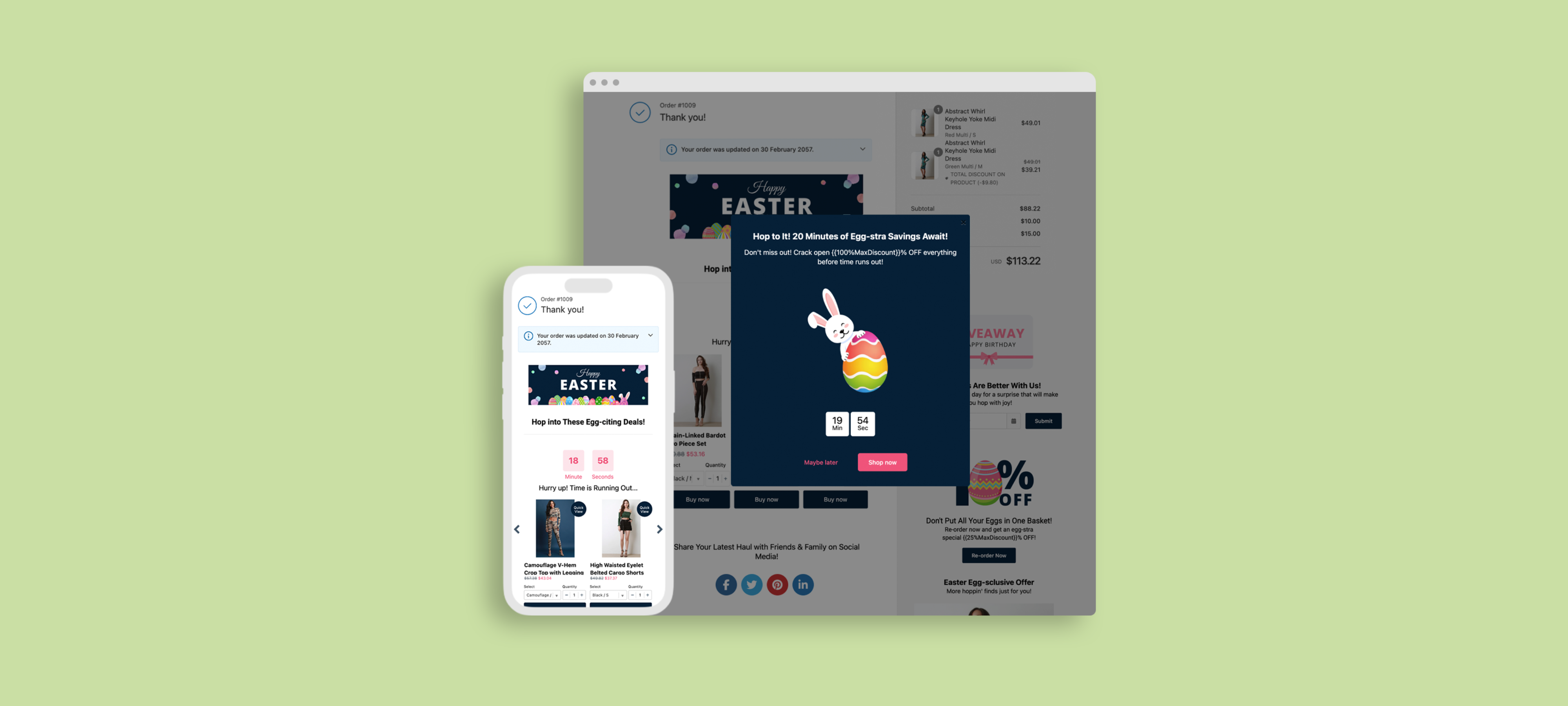Shopify Marketing Automation: The Simple Guide for Sellers

Every Shopify owner loves the thrill of being their own boss, but there is no denying the challenges that come with it.
You have to focus on multiple tasks, some of which are:
- Managing your inventory
- Satisfying your customers
- Advertising your products
- Optimizing your website for sales
These are just a few to name.
With so many things on your plate, it's essential to automate parts of your business that are possible to automate.
Shopify marketing automation is one area where automation can be heavily utilized.
To help you understand Shopifymarketing automation better, I’m going to dive into the best practices of marketing automation for Shopify, tips for choosing a Shopify marketing automation app, and workflows you can get started with today.
Let’s start from the basics and define what marketing automation means.
What is Shopify Marketing Automation?
Marketing automation is the process of using software to streamline marketing activities and tasks related to it. It allows Shopify store owners to automate their marketing efforts by sending targeted messages to specific groups of people at the right time.
Just behind content marketing, marketing automation is considered to be the most effective digital marketing technique, and the average return on investment for marketing automation is $5.44 per dollar spent.
These are just a few reasons why you should take advantage of it.
Why Use Shopify Marketing Automation?
Let's look into some immediate benefits you can gain when you apply marketing automation to your Shopify store.
1. Marketing Automation Saves Time
The most noticeable benefit of marketing automation is the saved time.
The goal of marketing automation tools is to automate manual marketing processes, such as:
- Sending the actual emails
- Creating segmented lists
- Selecting which products to promote
- Selecting which audience groups to target
Instead of spending time doing the above things manually, marketing automation tools help to automate these things.
2. Ensures Customers Don’t Slip Through the Cracks
The term 'Marketing Rule of 7' states that prospects need to hear advertisers' message at least 7 times before they will take action and buy.

Those who do not use marketing automation tools will miss out on these important touch points that are needed for increasing your conversion rates.
3. Increases Customer Retention and Loyalty
The best marketing automation tools enable you to build deeper connections with customers, which increases your customer retention and loyalty.
For example:
- When a potential customer subscribes to your email list, you can start building loyalty by sending them an automated welcome email, going deep into your brand values.
- When a customer's birthday or a special holiday is coming, you can send automated emails with special deals or show your brand's new collection.
Without marketing automation tools, these things couldn't be done effectively.
Getting Started with Marketing Automation for Shopify
Next, let's get to one of the main sections of the article, which is the process of getting started with marketing automation for Shopify.
You are between two options when starting marketing automation with Shopify.
You can select the built-in marketing automation tools of Shopify or choose a third-party marketing automation software.
Let's go through the features, pros, and cons of each option.
1. Shopify's Built-in Marketing Automation Tools
Shopify recently launched its new built-in marketing automation tools, which can be found directly from the Shopify admin dashboard.
If you decide to go with Shopify's built-in marketing automation tools, there are some pros and cons you should be aware of:
Pros:
- No extra costs each month. Shopify's built-in automation tools are included in the Shopify Basic plan, so you have no extra costs involved with using it.
- Does the basic job. If you have a smaller customer base and just getting started, you get the basic marketing automation done with it.
Cons:
- Limited features. There are limitations on integrations and the ability to add onsite popups with Shopify's marketing automation tools.
- Have to be on the Basic plan or higher to access it. You can't access Shopify's built-in marketing automation tools with the Shopify Starter plan.
If you decide to go with Shopify's built-in marketing automation tools, you can find them from your Shopify admin dashboard.
Click on "Marketing" and "Automations," and you can get started with the available automation templates.

2. Third-party Marketing Automation Software
If you want more flexibility and a tool that grows with you, third-party marketing automation software is a better option.
Here are some pros and cons of it:
Pros:
- Advanced features. Most third-party marketing automation software supports multichannel marketing. You have an extensive selection of integrations, and you can add onsite popups to capture emails.
- The software doesn't outgrow you. Third-party marketing automation tools are designed to scale with you. No matter how big your customer base gets, there is always room for growth.
- Multiple languages. Most third-party marketing automation software supports multiple languages, which is crucial if you have a multilingual store.
Cons:
- Extra cost. While most third-party marketing automation tools provide free trials, there is usually a monthly cost involved after that. However, I don't see it as a major disadvantage, given how good results marketing automation solutions like email marketing can bring (average ROI of $36 for every $1 spent).
To use third-party marketing automation software, you can install them from the Shopify app store.

How to Choose A Great Marketing Automation Tool: What To Look For
There are certain features that your Shopify marketing automation tool should have in order for you to use it effectively and scale.
Let's go through those features.
1. Ease of Use
To assess ease of use, consider these questions:
- Is it easy to navigate around the tool?
- Do the features work as advertised?
- Can you set up automated campaigns with ease?
All of these are important considerations when selecting your marketing automation tool.
2. Features
Depending on your needs, your marketing automation tool should have features such as:
- Customer segmentation
- Email personalization capabilities
- Ability to add onsite popups to capture emails
- Automated workflows to reduce manual tasks
- Ability to integrate with ecommerce platforms, marketing, and customer service tools
Evaluate your own needs and select a tool that provides the features you need to make your own marketing campaigns successful.
3. Pricing
When selecting your marketing automation tool, consider the pricing.
The prices vary a lot, and you may get access to all features with a less expensive plan on some tools. For instance, Drip or Omnisend are cheaper options than GetResponse if you want to do multichannel outreach.
If a free trial is important to you, make sure you check whether the software you are considering provides one.
4. Customer Data
Customer data is key when it comes to understanding your customers and crafting campaigns that are tailored to them. Make sure the tool you choose can capture and leverage customer data.
To get data from customers, you should be able to conduct A/B testing on your marketing automation campaigns.
5. Customer Support
Your marketing automation software should have good customer support in place that you can call and message if needed.
Self-help options, such as an extensive help center, are also essential for more immediate assistance.
6. Automation Templates
The best marketing automation tools come with templates that you can use for your own campaigns.
For example, Drip users get access to over 50 templates that can be customized further to match the needs of the seller.
7. Deliverability
Deliverability, aka if your emails are actually delivered to your prospect's inbox, should play a huge role when selecting your marketing automation software.
To ensure good deliverability, your marketing automation software should have minimum sending requirements in place.
As an example for Drip, this means requirements like:
- You own your website fully
- You have DMARC enabled and a custom sending domain in place
- You have opt-in permission from your customers to send them emails
While this may seem a lot, the best marketing automation providers help you with the setup process and offer things like custom sending domains as part of the service.
8. Integration with Shopify
A must feature for Shopify store owners is available Shopify integration.
To confirm that there is one available, go to your provider's website, and look for an "Integrations" tab on the header of the page.

Sometimes it’s located in the footer.
You can also check if the software is available on the Shopify app store.
To do that, head into the Shopify app store and search for your preferred marketing automation tool.

9. Shopify Store Rating
A good practice is to look into the reviews of other users before investing in a marketing automation tool.
When selecting your marketing automation tool, check the available Shopify store reviews.
For example, for Drip, this is how the review section looks like:

The 5 Best Shopify Marketing Automation Apps
The following five solutions are my top picks for Shopify marketing automation.
All of the options listed have direct integrations with Shopify and can be found in the Shopify app store.
1. Drip

Drip is an email and onsite marketing platform designed specifically for ecommerce brands. Drip's Shopify integration lets retailers run highly personalized, highly targeted email campaigns and collect valuable customer insights to turn website visitors into customers.
Drip pricing plans start at $39 per month for up to 2,500 contacts and unlimited email sends. To test out the platform, Drip has a 14-day free trial available.
2. Omnisend

Omnisend is an omnichannel marketing automation platform that offers email and SMS marketing functionality for ecommerce businesses. As the name suggests, its main strength is the available omnichannel features, allowing you to send fully customized email and SMS campaigns to your customers.
To start with, Omnisend has a free plan that gets you access to basic email and SMS-sending features.
3. GetResponse

GetResponse is mostly known as an email marketing platform, but higher-tier customers also get access to its SMS marketing and advanced automation features. It's used by over 350,000 businesses, and many well-known enterprise-level companies like Stripe, RedBull and IKEA use it.
Like with Omnisend, GetResponse has a free plan available that allows you to get up to 500 contacts and 2,500 monthly email sends.
4. Mailchimp

One of the most well-known marketing automation solutions, Mailchimp helps Shopify store owners manage all their marketing contacts, build personalized customer experiences, and gather actionable insights, all from one platform.
Mailchimp is free to use for up to 500 contacts and 1,000 monthly email sends.
5. Constant Contact

Constant Contact is an email marketing solution for Shopify stores that seamlessly combines email, SMS, social media, and automation into one platform. It's a well-known solution for small businesses, but it's best suited for nonprofits, who can save 30% off regular prices with Constant Contact.
Constant Contact prices start from $12 per month for up to 500 contacts and 5,000 monthly email sends.
Choosing a Shopify Marketing Automation Workflow
Now that you know the basics of marketing automation and the best marketing automation solutions, I will go through some of the best workflows you can send.
For each workflow, I will give an example of another company doing it.
1. Welcome Workflow
The welcome email is most often the first email you send after someone subscribes to your email list.
For sellers, this workflow is a good way to start building stronger relationships with customers.
A good example of a welcome workflow comes from Three Sips.
In the text of the first welcome email, Three Sips introduces its email subscribers to its brand and its core values.

Plus, there is a banner image featuring the founders of the brand, which fosters trust.

In the same way, you can send a welcome email that explains your brand values. After sending the first welcome email, you could send 1-2 more emails that go even deeper into what your brand is all about.
2. Browse Abandonment Workflow
A browse abandonment email is typically sent when a visitor views a product or category page but does not add any items to their shopping cart.
To create a browse abandonment workflow that effectively captures readers' attention, you can use a similar email subject line to REBEL8's.

The subject line catches reader’s attention, and once the reader opens the email, they see this:

They combine three powerful elements here: the item's popularity, fear of missing out on the limited edition, and the brand's quick delivery and easy returns.
3. Cart Abandonment Workflow
The average cart abandonment rate is around 70%.
If you don't target these people with cart abandonment workflows, you're missing out on a lot of potential sales you could have made.
For Brooklinen, it means sending up to three emails reminding their customers of the products in their cart.
In the first email, they promised 10% extra discount on the product.

The second email acts as a reminder for the first email.

For the third email, they increased the incentive to buy by offering 10% off and free shipping on top of that.
In the same way, you can send 1-3 cart abandonment emails encouraging potential customers to finish their purchase.
4. Post Purchase Workflow
Post-purchase emails are those that you send to your customers after they have made a purchase at your online store.
Most of the time, these emails tend to only contain important information regarding a customer's order. But you can also use them for more than just sending a post-purchase email; for example, you can use them to increase customer loyalty or to upsell your products to your existing customers.
See how Allbirds increases customer trust with their post-purchase email.
First, they simply let the customer know that their order is received and being processed.

Below this, they explain their brand values more to the customers.

The email both explains what makes the brand unique as well as delights the customer with their purchase.
5. Reactivation/Win Back Workflow
A reactivation/win-back campaign aims to re-engage lapsed subscribers who have stopped engaging with your marketing campaigns or stopped buying your products.
Warby Parker has a unique angle of using astrology to guide their customers to buy from them again.
First, they hook old customers in with the subject line:

Based on their astrological sign, they recommend a pair of glasses.

In the same way, as Warby Parker does, you should find a unique angle for your reactivation/win-back email campaigns.
Shopify Marketing Automation Best Practices
Marketing automation is often overlooked, yet it's arguably one of the best ways to build deeper relationships with your customers and increase your sales.
To ensure successful marketing automation campaigns, make sure you:
- Personalize your message. Almost 80% of marketers believe personalization improves customer relationships. If you want to stand out in the filled inboxes, keep your messages personalized.
- Test different campaigns and strategies. All of the third-party marketing automation tools we listed have A/B testing capabilities. Don't be afraid to test out different variations for increased results.
- Focus on customer experience. My main point with this is to keep your email sending frequency at a reasonable level. There are many studies done on this, and sending two to three emails per week seems to be the sweet spot for most.
If you follow these three principles , you’ll be well on your way to creating successful marketing automation campaigns!
Marketing Automation for Shopify Wrap-Up
In conclusion, implementing marketing automation for your Shopify store can be a game-changer, streamlining tasks and boosting efficiency. Whether through Shopify's built-in tools or third-party software, automation saves time and ensures no customer slips through the cracks.
It also enhances customer retention and loyalty, leveraging the "Marketing Rule of 7" for increased conversions. When choosing a marketing automation tool, consider factors like ease of use, essential features, pricing, customer data handling, and integration with Shopify.
Among the top five marketing automation apps for Shopify, Drip, Omnisend, GetResponse, Mailchimp, and Constant Contact stand out for their robust features and direct integration. Each offers unique advantages, so select one that aligns with your specific business needs and budget.
Furthermore, adopting key workflows such as welcome, browse abandonment, cart abandonment, post-purchase, and reactivation/win-back campaigns can significantly impact customer engagement and sales. Personalization, testing, and prioritizing customer experience are critical factors in the success of these campaigns.
By embracing marketing automation best practices, Shopify owners can unlock tremendous potential, fostering stronger connections with customers and driving revenue growth. So, don't miss out on this powerful tool to propel your business forward!

.png)




.png)
